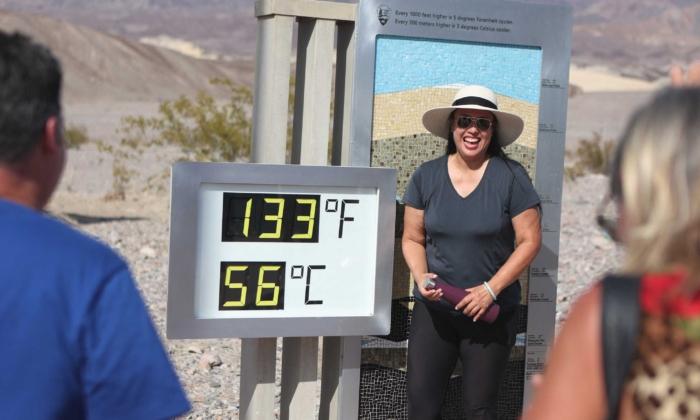More than 100 million people across the United States are sweltering under extreme heat alerts or advisories as an already dangerous heat wave is continuing to affect a broad swath of the country, with temperatures expected to exceed 110 degrees Fahrenheit (43 degrees Celsius) in multiple places this week.
The National Weather Service (NWS) warned on July 16 that the “extremely dangerous heat wave” will last through at least the coming weekend.
“Dangerous heat” has begun building along the Gulf Coast and in the Southwest region, with heat index readings of over 110 degrees Fahrenheit expected through July 21, NWS said.
In some locations—the San Joaquin Valley and Mojave Desert in California, and the West’s Great Basin—the NWS is predicting the potential for “all-time heat records.”
Warnings for cities such as Phoenix, Tucson, San Diego, Los Angeles, and Las Vegas can range from “major” to “extreme,” the agency warned.
A “major” warning indicates that heat can affect anyone without adequate hydration or cooling. An “extreme” warning is a rare, potentially long-duration heat with little to no overnight relief.

The NWS is advising people to “take the heat seriously” and avoid spending time outdoors.
“Temperatures will reach levels that will pose a health risk, and be potentially deadly to anyone without adequate hydration or effective cooling,” it warned, adding that “heat is the leading weather-related killer in the U.S.”
The Occupational Safety and Health Administration (OSHA) has issued an advisory that warns about the dangers of heat exposure. The agency advises workers to drink a cup of cool water once every 20 minutes, take rest breaks in a cool or shady location, and monitor co-workers for signs of heat illnesses.
Heat Dome
The intense heat wave in the Southwest is being blamed on a heat dome, which is created when a ridge of high pressure builds in a region and the atmosphere traps hot air like a lid or cap. With air unable to escape the dome, temperatures keep warming, sometimes to dangerous levels.In a July 17 update, the NWS blamed the expected “near-record temperatures” this week on “a strong and persistent high-pressure system.”
On July 16, the Furnace Creek area of Death Valley—thought to be the hottest place on Earth—recorded temperatures of 126 degrees Fahrenheit (52 degrees Celsius), which is a record for July 16, according to NWS Las Vegas.

The hottest temperature ever recorded on Earth was 134 degrees Fahrenheit (57 degrees Celsius) in July 1913 at Furnace Creek.
Heat Illnesses
According to the U.S. Centers for Disease Control and Prevention (CDC), more than 600 Americans die of heat-related illnesses every year.Between 2018 and 2020, a total of 3,066 heat-related deaths were recorded; the highest percentage of heat-related deaths occurred among persons aged 55 to 64 years (19 percent), and the lowest percentage occurred among those aged 5 to 14 years (1 percent).
The most serious heat-related illness is heat stroke, which occurs when the body becomes incapable of regulating its temperature. In such a situation, the body’s temperature will keep rising rapidly, the sweating mechanism will fail, and the body becomes unable to cool down. Heat stroke can result in death or permanent disability.
Heat exhaustion is another major illness caused by exposure to excessive heat. It’s the body’s response to an excess loss of water and salt. The condition usually affects elderly people, those working in a hot environment, and people with high blood pressure.





